Battery breakthrough charges in seconds, lasts for a week
November 25, 2016
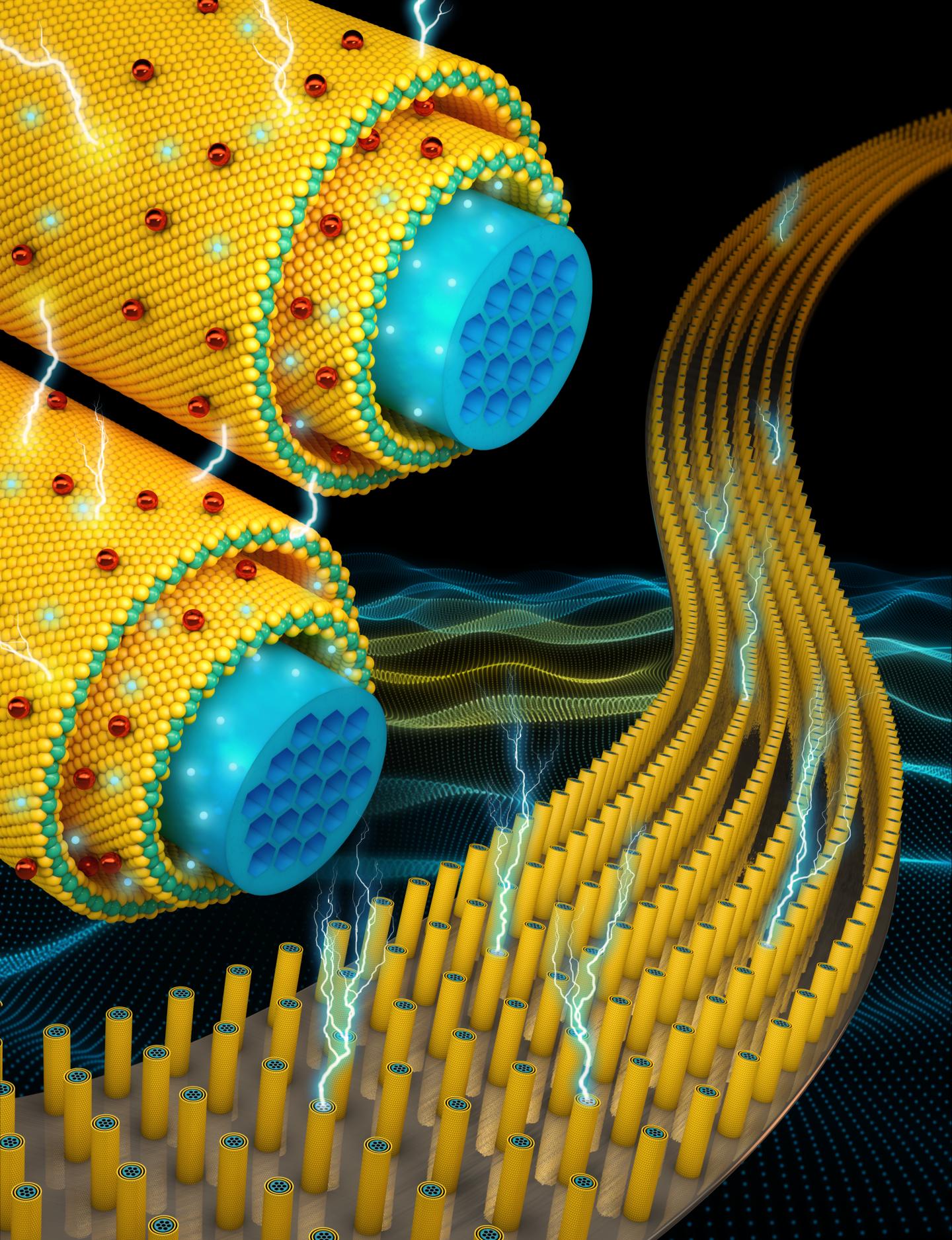
Illustration representing the novel design of a hybrid supercapacitor, showing bundles of nanowires (blue) coated with 2D energy-storage materials (yellow) (credit: University of Central Florida)
University of Central Florida researchers have developed a radical new supercapacitor design that could one day replace lithium-ion batteries, allowing users to charge a mobile phone in a few seconds and with a charge that lasts a week, according to the researchers. The new battery would be flexible and a fraction of the size of a lithium-ion battery.
The proof-of-concept design is based on a hybrid supercapacitor composed of a core with millions of highly conductive nanowires coated with shells of two-dimensional materials.* It combines fast charging and discharging (high power density) and high storage capacity (high energy density).
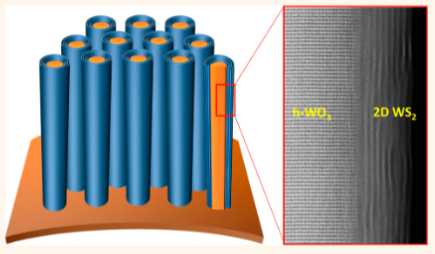
Supercapacitor design: an array of electrically conductive nanowires (orange) with metal current-collector covering (blue) (credit: Nitin Choudhary et al./ACS Nano)
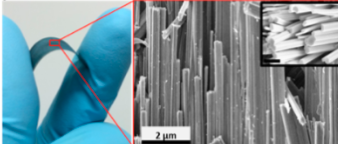
Optical image of core/shell nanowires on a tungsten foil under mechanical bending (left). Corresponding SEM image (right) shows high-density, well-aligned nanowires along with their faceted surface (inset). The scale bar in the inset is 500 nm. (credit: Nitin Choudhary et al./ACS Nano)
Another advantage would be “cyclic stability” (how many times a battery can be charged, drained and recharged before beginning to degrade). A lithium-ion battery can be recharged fewer than 1,500 times without significant failure, compared to recently developed supercapacitors based on two-dimensional materials, which can be recharged more than 30,000 times.
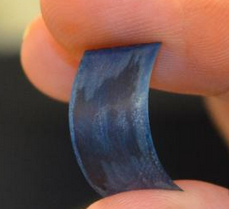
Supercapacitor prototype showing flexible design (credit: (credit: University of Central Florida)
Electric vehicles could also benefit from longer-range operation and sudden bursts of power and speed. The flexible material could mean a significant advancement in wearable tech, according to the researchers, and would also avoid the risk of overheating and explosion with lithium-ion batteries.
Hee-Suk Chung of Korea Basic Science Institute was also involved in the research, which was published recently in the journal ACS Nano.
* The core nanowire material is tungsten trioxide (WO3) and the two-dimensional shell material is a transition-metal dichalcogenide, tungsten disulfide (WS2).
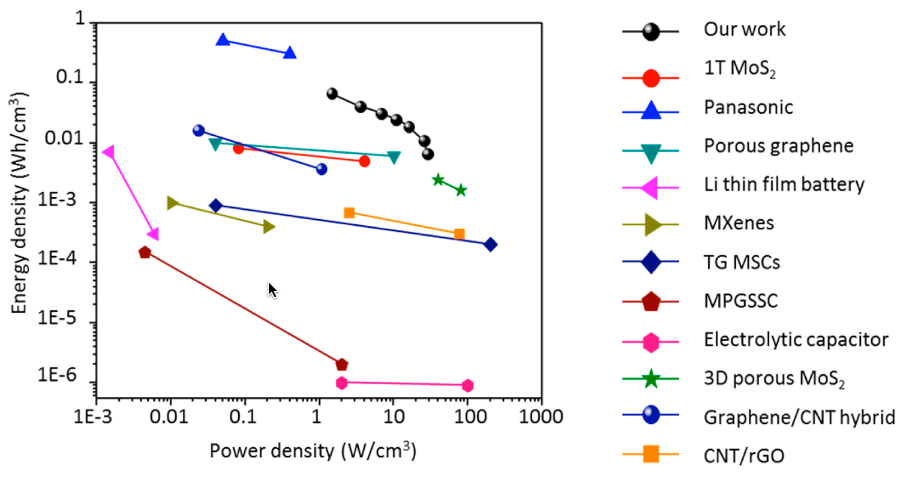
Ragone plot to compare the performances of various technologies with the core/shell nanowires supercapacitor in this study (credit: Nitin Choudhary et al./ACS Nano)
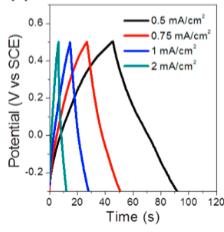
Galvanostatic Charging/Discharging (GCD) various current densities in the voltage range of 0.3 and 0.5 V, showing nearly symmetrical voltage curves, indicating highly reversible and fast responses. (credit: Nitin Choudhary et al./ACS Nano)
Abstract of High-Performance One-Body Core/Shell Nanowire Supercapacitor Enabled by Conformal Growth of Capacitive 2D WS2 Layers
Two-dimensional (2D) transition-metal dichalcogenides (TMDs) have emerged as promising capacitive materials for supercapacitor devices owing to their intrinsically layered structure and large surface areas. Hierarchically integrating 2D TMDs with other functional nanomaterials has recently been pursued to improve electrochemical performances; however, it often suffers from limited cyclic stabilities and capacitance losses due to the poor structural integrity at the interfaces of randomly assembled materials. Here, we report high-performance core/shell nanowire supercapacitors based on an array of one-dimensional (1D) nanowires seamlessly integrated with conformal 2D TMD layers. The 1D and 2D supercapacitor components possess “one-body” geometry with atomically sharp and structurally robust core/shell interfaces, as they were spontaneously converted from identical metal current collectors via sequential oxidation/sulfurization. These hybrid supercapacitors outperform previously developed any stand-alone 2D TMD-based supercapacitors; particularly, exhibiting an exceptional charge–discharge retention over 30,000 cycles owing to their structural robustness, suggesting great potential for unconventional energy storage technologies.